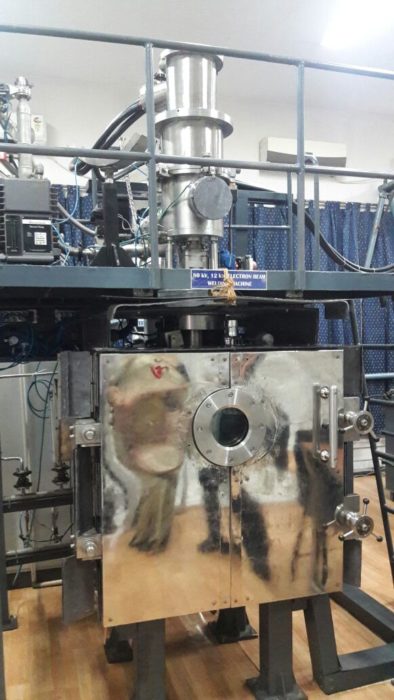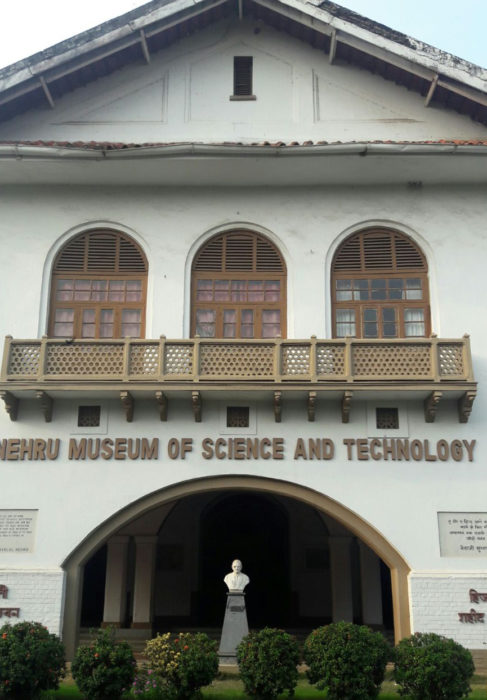28th October 2016 Kolkata, India
Innovating with technology

I hope it won’t have escaped readers’ attention that Britain will be this year’s partner nation for India’s annual TECH Summit on 7-9 November in Delhi. People like me have been talking, tweeting and explaining about TECH Summit – #TECHSmt if you are on Twitter – for some weeks now. Our efforts to disseminate the news has been made much easier because our Prime Minister has decided to attend the opening as part of her visit to India.

To help me prepare for the event, I visited the Indian Institute of Technology (IIT) at Kharagpur, near Kolkata. I wanted to talk to people for whom technology is central to their work, rather than rely on my own experience which, as a diplomat, is pretty much that of the ordinary person on the street.
I had great fun during my visit hearing about all their research projects, the aspirations of their students, and their increasing focus on innovation and helping start-up companies. I was pleased to hear of the collaboration between IIT Kharagpur and British institutions. My visit was timely as the Director of IIT Kharagpur, Professor Partha Chakravorty, had just agreed to be a speaker at the Summit.
Professor Chakravorty was delighted to discover that I studied history at university. He excited my curiosity by telling me about some of the institute’s latest research on soil samples from Punjab. The results suggest that the oldest civilisation in South Asia – the Indus Valley or Harappan, together with ancient Egyptian and Mesopotamian, one of the three earliest civilisations in the world – may in fact be older than previously thought.
Mostly we talked about the use of technology now and the advantages of inter-disciplinary research to help innovation. Some of the best innovation is the result of applying research from one specialisation to another area. I saw a good example of mechanical engineering techniques being applied to improve the design, construction and insertion of replacement hips and other joints, a collaboration between IIT Kharagpur and Southampton University.
While I enjoyed my day, on reflection I realised how difficult it is to define what is technology. I fretted on a definition as I drove back to Kolkata. I should say that one of the most important lessons drilled into me at school was that I should never use a word, term or jargon that I could not define. I’ve found the lesson invaluable when trying to understand something.
The word ‘technology’ is derived from the ancient Greek, a translation of which would be the ‘science of craft’. There appear to be two broad categories in modern definitions. Between one about means – for example, technology is the techniques, skills, methods and processes used to produce goods or services – and one about ends – so technology is the machinery and devices developed from scientific knowledge – or more simply ‘applied science’.
A full definition of technology probably entails an amalgam of both means and ends – so both machines and devices and the processes, systems and skills that are within or needed to use them. Perhaps a shorthand way of thinking of technology, is tools and how we use them. But it’s not just tools – it can be manipulation of organic materials and substances (biotechnology) and increasingly of tiny mechanisms (nanotechnology).
Very few other living creatures use ‘technology’. A few use tools to help find food, and some build complex structures (or ‘nests’ in plain English). The essence of what we know as technology entails some form of human intervention.
There is great debate about the pace of technological change. The conventional wisdom associated with the information technology revolution is that the pace of change is accelerating. There is a theory that the power of computers doubles every 18 months (Moore’s law), and one that the power of a network increases by the square of the people networked and interacting with it (Metcalfe’s law).
The most striking element of this revolution is that digital technology itself enables us to transfer details of other technologies at the push of a button to anyone in the world. With the development of such machines as 3D printers, we can now re-create objects anywhere, anytime by anybody.
All this technology has changed our lives. This isn’t all for the good given that the use of machines and burning of fossil fuels has polluted our planet and the release of carbon is causing climate change. It is most likely that technology will provide many of the answers to this problem.

When we met, Professor Chakraborty and I agreed that we may already have the technology that can help with these challenges – but we just don’t know it. Some of the solutions may be very low tech if we are willing to use them. So, for example, our reliance on plastics – the waste of which is drifting around in the world’s oceans – could be reduced if we returned to using jute widely as a material for packaging.
I’m looking forward to meeting Professor Chakraborty again in Delhi at the India-UK TECH Summit. Like the small child that is within all of us, I’ll be thrilled to hear about how the vehicle driven by the world’s fastest man, or see some robots. But I will be also looking for technology that solves the challenges we face, be they of disease or environmental degradation. For what is technology without a human benefit?